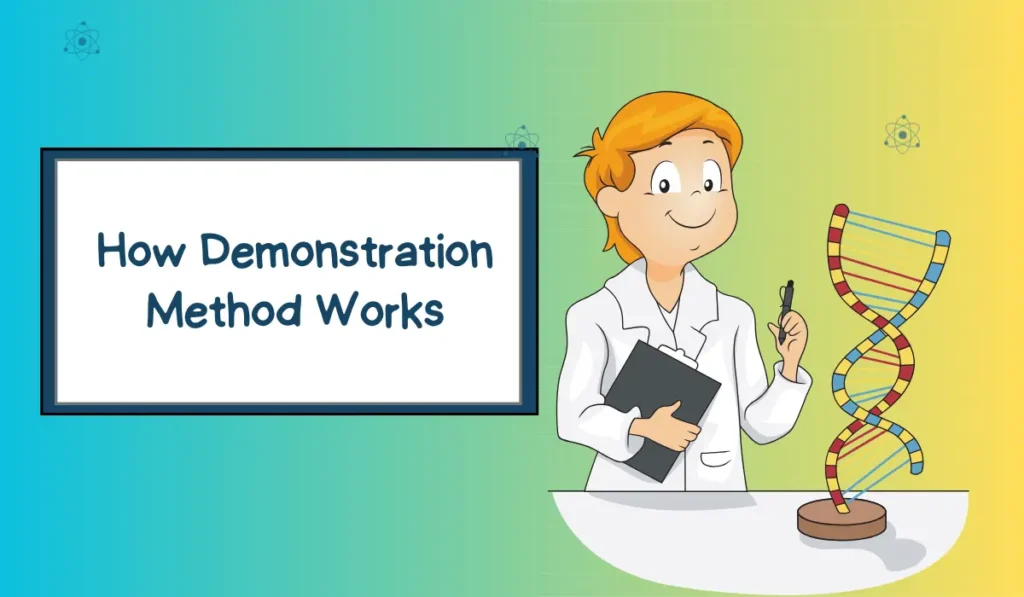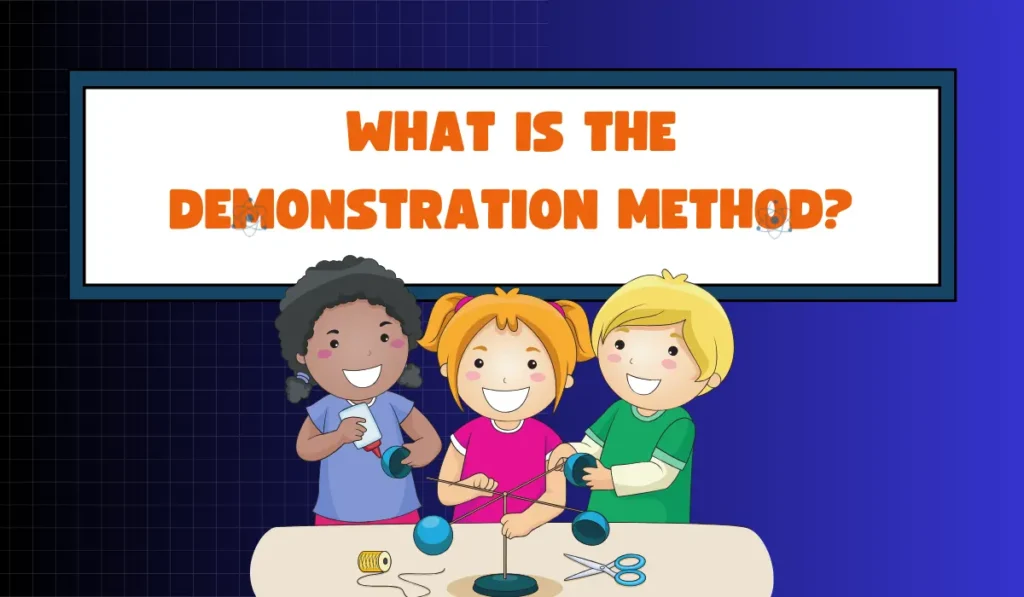The demonstration method is widely used in science laboratories, cooking classes, and technical training programs. The method plays a vital role in shaping the future of learners by providing them with practical experiences and knowledge.
Educators, trainers, and presenters can use this method in their teachings to enhance the learning experience.
How Demonstration Method Works

The demonstration method is a teaching technique that utilizes visual aids and hands-on experience to help students understand complex academic concepts.
This method aims to explain to students how a particular phenomenon happens instead of just presenting them with the outcome.
The following principles underpin the effectiveness of the demonstration method:
- Active learning: Students participate actively in the classroom by conducting experiments or observing demonstrations.
- Experiential learning: Students learn by experiencing and feeling the phenomenon rather than just memorizing abstract concepts.
- Constructivism: Students learn by constructing their knowledge from the information given to them in class.
Demonstration Method Is Applied In Different Settings
The demonstration method is used extensively in science, technology, engineering, and math (STEM) courses. However, it can be applied to almost any subject, as its flexibility allows teachers to modify it based on class size and the student’s cognitive ability.
Here are some examples of how the demonstration method can be used:
- In geography, students can learn about the contour lines of a mountain by making a 3d model of the terrain.
- In biology, students can learn about osmosis by observing how potato slices lose or gain weight in different solutions.
- In history, students can learn about the Treaty of Versailles by role-playing an international meeting and negotiating terms.
Demonstration Method Vs. Traditional Teaching Methods
Demonstration method differs from traditional teaching methods in the following ways:
- Emphasis on active learning: The demonstration method puts learners at the center of the learning process, allowing them to apply what they learn, and improving their memory retention and understanding. Traditional teaching, on the other hand, is often passive, with students simply taking notes or listening to lectures.
- Experiential learning: With the demonstration method, students experience the phenomenon being taught, deepening their understanding and improving their ability to apply it to real-world situations. In traditional teaching, students are often given information that is not easily relatable to their daily lives.
- Constructivism: The demonstration method allows students to construct their knowledge out of their experiences, and understand how the concepts being taught are interconnected. Traditional teaching, however, often presents information in silos without emphasizing the relationships between subjects.
This method promotes the construction of new knowledge as an interactive and iterative process, allowing learners to grasp the concept and apply it to different contexts.
Benefits Of the Demonstration Method

This approach is particularly useful in science, engineering, technology, and medicine.
Enhanced Retention And Understanding Of Concepts
- Students learn better when they see things in action.
- Demonstrations help to clarify complex concepts that might be difficult to understand in theory.
- Students are better able to retain what they have learned through demonstrations.
- The visual and practical nature of demonstrations helps to create a lasting impression, which is why students are likely to remember the concepts more effectively.
Improved Critical Thinking And Analytical Skills
- Demonstrations stimulate critical thinking and analytical skills in students.
- Students are encouraged to observe and analyze what the teacher is doing, which helps to develop their analytical skills.
- Demonstrations also encourage students to ask questions and think critically about the concepts being taught.
- This approach, therefore, contributes significantly to the holistic development of students, making them better critical thinkers, and problem solvers.
Better Engagement And Active Participation
- Demonstrations are engaging and interactive, making the learning process more enjoyable.
- Students are more likely to participate actively in demonstrations because they are more interesting and exciting than traditional teaching methods.
- The practical nature of demonstrations allows students to take an active part in the learning management software process, thus enhancing their learning experience
- Demonstrations instill a sense of curiosity and motivation in learners, which motivates them to learn even more.
Implementing Demonstration Method
When implemented properly, it can enhance the learning experience of students and help them retain information better. Here are some key strategies for implementing the demonstration method:
Choosing The Right Activities For Demonstration Method
It is essential to choose the right activities that are suitable for the demonstration method. Here are some factors to consider:
- Choose activities that align with the learning objectives
- Select activities that are appropriate for the age and level of your students
- Pick activities that are feasible to demonstrate in the classroom
- Ensure that you have all the necessary materials and equipment
Preparing And Organizing Demonstration Sessions
Preparing and organizing your demonstration sessions is crucial for a successful implementation of the demonstration method. Here are some tips:
- Plan and rehearse the demonstration before presenting it to the class
- Set up the necessary materials and equipment in advance
- Make sure the seating arrangement and viewing angle of students are appropriate
- Explain the safety procedures and precautions before starting the demonstration
Effective Demonstration Method Presentation
To ensure an effective presentation of your demonstration session, consider using these strategies:
- Use clear and concise language
- Use visual aids and props to enhance understanding
- Engage the students through questioning and discussion
- Demonstrate each step slowly and clearly to give students time to process the information
- Use positive reinforcement to boost student appreciation and motivation
By implementing these strategies, you can make your demonstration method engaging, informative, and effective for your students.
Frequently Asked Questions
What Is Demonstration Method In Teaching?
The demonstration method is an instructional strategy that shows how something works or how to do something.
How Does the Demonstration Method Work?
It works by showing learners how something is done, explaining the steps involved, and giving them a chance to try.
What Are The Advantages Of Demonstration Method?
The advantages of the demonstration method are that it helps learners to visualize concepts, it is interactive, it makes learning more engaging, and it provides a hands-on learning experience.
When Should Demonstration Method Be Used?
The demonstration method should be used when trying to teach learners practical skills or when trying to explain concepts that are better understood through visual aids.
Conclusion
The demonstration method is a widely used teaching technique that aids learners’ understanding by presenting real-life situations. As proven by numerous studies, this method fosters learner involvement and improves their retention and recall capacity. By providing a multi-sensory learning experience, the demonstration method counters boredom and helps learners better retain data. Instructors can add multimedia components and interactive activities to enhance the learning experience, leading to better engagement and increased knowledge retention.


